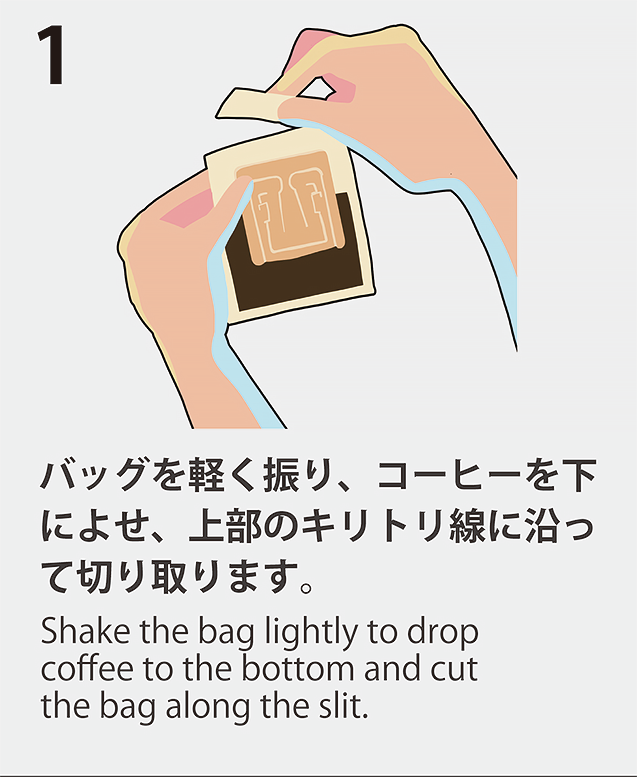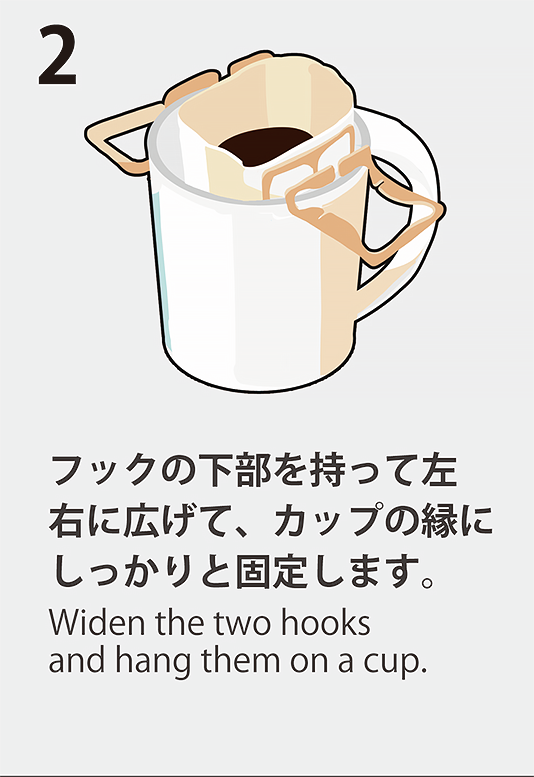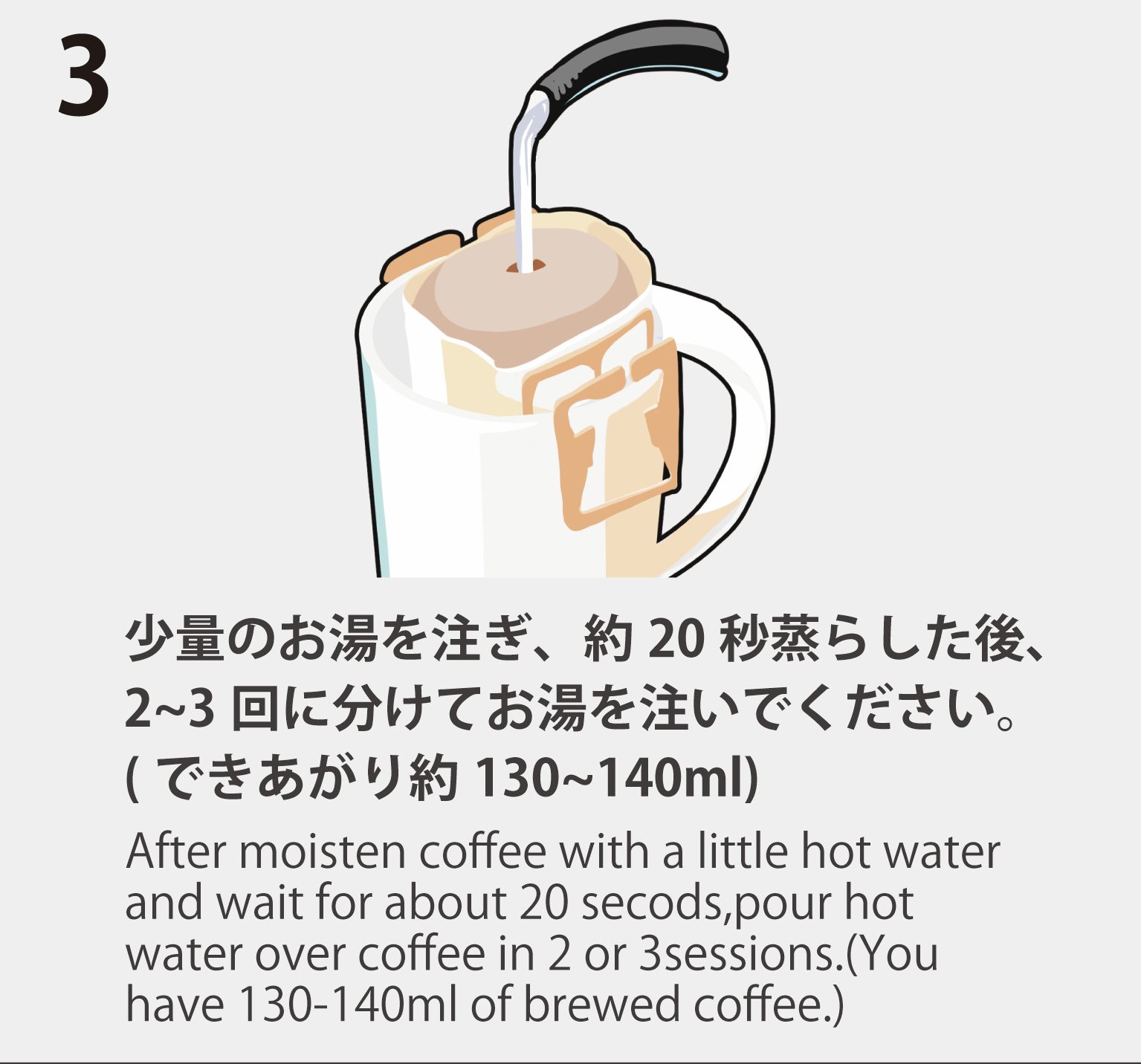よくあるご質問FAQ
-
レギュラーコーヒーRegular coffee
-
Q.コーヒーの表面に油のようなものが浮いています。There is something like oil floating on the surface of the coffee.
A.コーヒーに含まれる脂質分です。品質には問題ございません。That is the fat content in coffee. There is no issue with quality.
-
Q.コーヒーの粉の中に白っぽい粉が混ざっています。There is a whitish powder mixed in the ground coffee.
A.コーヒー豆を包んでいる種皮(シルバースキン)と思われます。種皮は製造工程で取り除かれますが、一部がコーヒーの粉に混ざり白く見えることがあります。品質・味わいには問題ございません。It is most likely the thin skin (silver skin) that covers the coffee bean. The silver skin is removed during the manufacturing process, but some remain in the coffee grounds and may appear white. There is no issue with quality and taste.
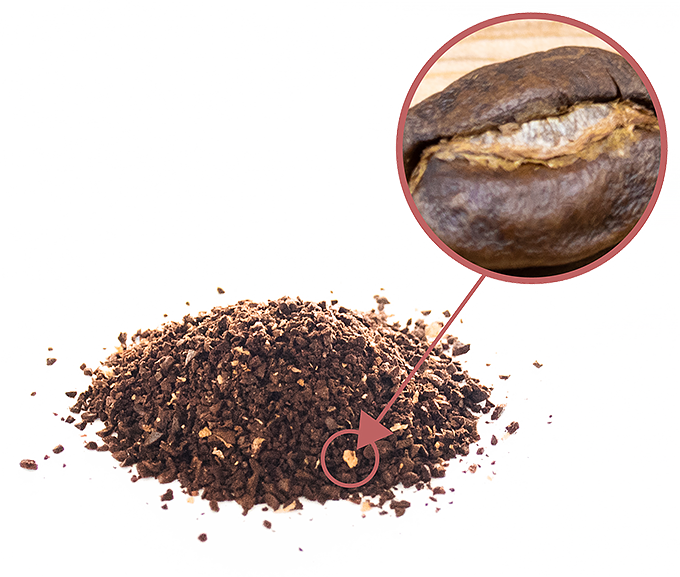
-
Q.カフェインレスコーヒーについて、カフェインの除去方法を教えてください。How is the caffeine removed in decaffeinated coffee?
A.カフェインが水に溶ける性質を利用してコーヒー生豆からカフェインを除去しています。(小川珈琲では水抽出方法を採用)Caffeine is removed from green beans using the water-soluble nature of caffeine. (Ogawa Coffee uses a water extraction method.)
-
Q.コーヒーの成分を教えてください。What is nutritional content of coffee?
A.【抽出液の成分】コーヒー粉末10gを熱湯150mlで浸出した抽出液100gあたり【The nutritional content of brewed coffee】per 100g of brewed coffee using 10g of ground coffee and 150ml of hot water
エネルギー(熱量)Energy (calorie) 4kcal たんぱく質Protein 0.2g 脂質Lipid 微量Trace 炭水化物Carbohydrates 0.7g ナトリウムSodium 1mg 食塩相当量Salt equivalent 0.003g カリウムPotassium 65mg カルシウムCalcium 2mg リンPhosphorus 7mg カフェインCaffeine 約Approx.0.06g ※日本食品標準成分表2020年度版(八訂)よりFrom the Standard Tables of Food Composition in Japan, 2020 Edition (8th Revision)
-
Q.レギュラーコーヒーの抽出後のコーヒー粉(コーヒーグラウンズ)や期限切れのコーヒーの活用方法はありますか。Is there a way to use coffee grounds that are expired or after brewing?
A.コーヒーはにおいを吸着すると言われています。そのため脱臭剤としてご利用いただけます。水分が多いとカビが発生する恐れがありますので、ご注意ください。Coffee is known to absorb odors, and therefore, can be used as a deodorant. Please note that if too much moisture if left, mold may occur.
-
Q.コーヒーは1日何杯ぐらいなら飲んでもいいですか。How many cups of coffee can I drink in a day?
A.コーヒー摂取量による体への影響は個人差が大きいため、何杯が適量かは健康状態、年齢、求める効果などにより異なります。The effect of coffee intake on the body varies greatly from person to person, so the appropriate amount of coffee consumption depends on your health condition, age, desired effects, and other factors.
-
Q.コーヒーが持つ健康機能を教えてください。What are the health benefits of coffee?
A.コーヒーと健康に関しては研究が重ねられています。「コーヒーと健康」については以下のウェブサイトをご参照ください。There is a lot of research on coffee and health. Please refer to the following website for information on 'coffee and health.'
http://coffee.ajca.or.jp/webmagazine/health 参照先(全日本コーヒー協会)。(Reference: All Japan Coffee Association)
-
-
製造・賞味期限Manufacturing and expiration date
-
Q.賞味期限とは何ですか。
賞味期限を過ぎたものを飲んでも大丈夫ですか。What is the expiration date?
Is it okay to drink the coffee past its expiration date? A.賞味期限は、開封していない状態で表示されている保存方法に従って保存した時に、美味しく飲んでいただける期限を示しています。賞味期限を過ぎたものはお召し上がりになることをおすすめしておりません。The expiration day indicates the last date that the taste is maintained when the coffee is stored unopened and according to the storage method indicated. We do not recommend consuming products past its expiration date.
-
-
包装・保存方法Packaging and storage method
-
Q.袋の正面についているシールは何ですか。What is the sticker on the front of the bag?
A.パッケージ内の炭酸ガスを排出するワンウェイバルブをつけています。It attaches the one-way valve that discharges carbon dioxide from the package.
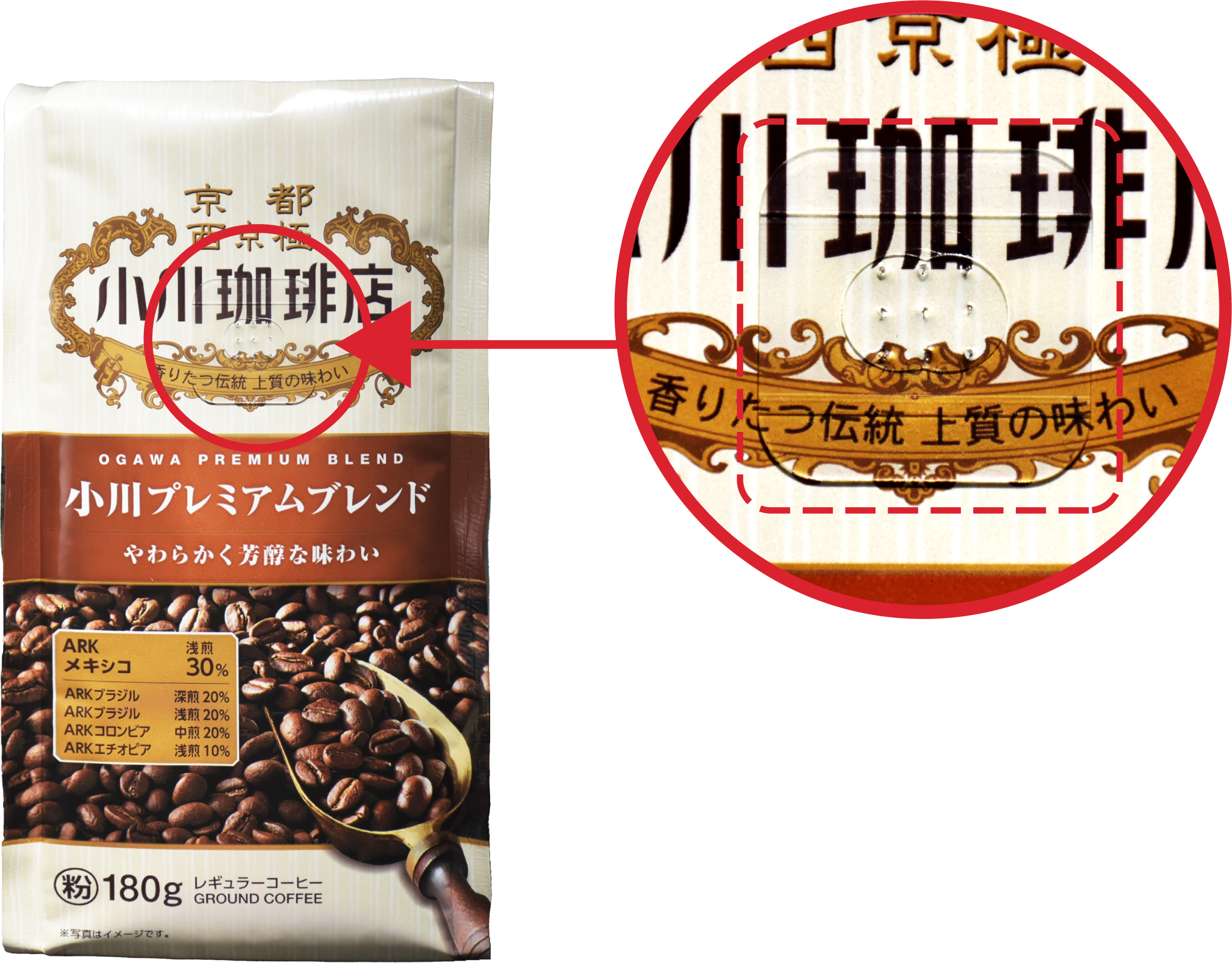
-
Q.レギュラーコーヒーの袋が膨れており、袋を押すとコーヒーの香りがします。The coffee bag is inflated and I can smell roasted coffee when I press the bag.
A.コーヒーが発するガスや気温の影響で袋が膨張または収縮する場合があります。パッケージ正面の特殊バルブがガスを放出し、外気の侵入を防ぎ、コーヒーの風味を保っています。そのバルブより香りが漏れ出る場合がありますが、製品としては問題ありません。The coffee bag may inflate or deflate due to the temperature or gas emitted by the coffee. A special valve on the front of the bag releases gas from the inside, preventing outside air from entering and preserving the flavor of the coffee. The coffee smell may leak from this valve, but there is no problem as a product.
-
Q.レギュラーコーヒーの開封後の保存方法、保存期間を教えてください。How should I store coffee after opening, and for how long?
A.開封後は袋の口をしっかりと閉じ、密封できる容器に入れてできるだけ早めにお召し上がりください。After opening, close the bag tightly, put it in a container that can be sealed, and consume as soon as possible.
-
Q.レギュラーコーヒーを冷蔵庫・冷凍庫で保存してもよいですか。Can I store coffee in the refrigerator or freezer?
A.冷蔵・冷凍保存すると、レギュラーコーヒーの粉が結露を起こす、粉の温度が低くて抽出不良を起こす、冷蔵庫内の香りを吸着するなどが考えられるため、おすすめしておりません。We do not recommend refrigerating or freezing coffee because this may cause condensation on the coffee grounds, the low temperature may cause poor extraction, or the coffee may absorb the smells in the refrigerator.
-
Q.リキッドコーヒーを開封後の保存方法、保存期間を教えてください。How should I store iced coffee after opening, and for how long?
A.開封後は冷蔵庫で保管し、なるべく早めにお飲みください。After opening, store in the refrigerator and consume as soon as possible.
-
Q.炭焼リキッドコーヒー1Lのキャップを開けると中栓がなく内容液が見えます。最初から開いていたのではないですか。When I open the charcoal roasted iced coffee 1000ml, I can see the coffee inside without the inner plug. Was it already opened?
A.中栓はありません。開封前は「いたずら防止リング」がキャップについており、口栓内はシールで密閉されています。キャップを左に回すと、いたずら防止リングが下にはずれ、同時に口栓内の開封用の歯シールが切られて開封されます。『京都 小川珈琲 炭焼珈琲』は中栓のないパッケージを採用しています。There is no inner plug. Before opening, the tamper-proof ring is attached to the cap, and the inside of the spout is sealed with a seal. When the cap is twisted to the left, the tamper-proof ring is detached downward, and at the same time, the inside seal is cut open by the opener teeth located inside the spout. "Kyoto Ogawa Coffee Charcoal Roasted Coffee" uses package without the inner plug.
キャップの構造についてStructure of the cap

開封前は、いたずら防止リングがキャップについており、口栓内はシールで密閉されています。キャップを左に回すといたずら防止リングが下に外れ、同時に口栓内の開封用の歯によりシールが切られて開封されます。切られたシールは内側に折れて残りますが、外からは見えない場合があります。(中栓はありません)Before opening, the tamper-proof ring is attached to the cap, and the inside of the spout is sealed with a seal. When the cap is twisted to the left, the tamper-proof ring is detached downward, and at the same time, the inside seal is cut open by the opener teeth located inside the spout. The cut seal remains folded inside, but it may not be visible through the spout. (There is no inner plug.)

-
-
飲み方Brew directions
-
Q.簡易抽出型ドリップコーヒーの抽出方法を教えてください。How do you make coffee using the simple brew drip coffee.
A.小川珈琲の「簡易抽出型ドリップコーヒー」はカップにセットし、お湯を注ぐだけで手軽にレギュラーコーヒーがお楽しみいただけます。
以下の手順に沿って、抽出してください。You can enjoy Ogawa Coffee's drip coffee by simply setting it directly onto the cup and pouring hot water into it. Brew your coffee by following the steps below.おいしい入れ方/Directions
【抽出の際の注意事項】
*ドリップパックを開封する際は「OPEN」の矢印が上部になるように持ち、三角の矢印に沿って端から開封してください。【Precautions while brewing】
*When opening the drip coffee bag, please be sure that the 'OPEN' letters are at the top and tear along the line following the arrows.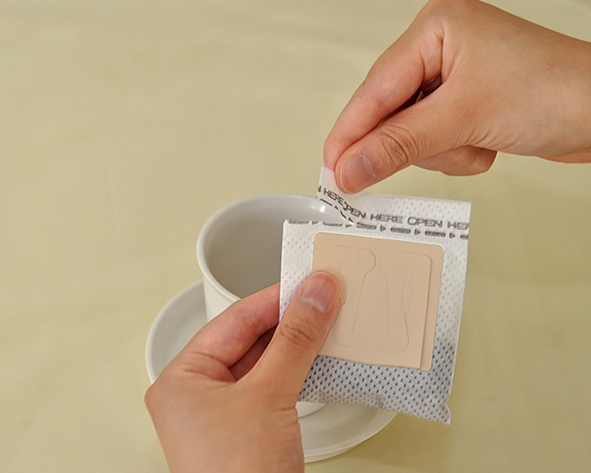
*コーヒーに注ぐ湯量はお好みにあわせて調整してください。抽出時は多めのお湯をご準備ください。(ドリップコーヒー1杯分 注ぐ湯量:目安150〜160ml 出来上がり量:目安130〜140ml)
*事前にカップなどを温めていただくと、召し上がられる際にコーヒーの温度が下がりにくくなります。
*コーヒー抽出の際に使用するお湯は、90℃前後の湯温をおすすめしています。
*カップはフィルターのサイズにあったものを使用し、安定した場所に置いてください。
*熱湯を扱いますので火傷にご注意ください。
*コンロなどの熱源の近くに置かないでください。フィルターが袋に張りつくことがあります。*Adjust the amount of hot water based on your preference. Prepare more than enough hot water. (For a cup of drip coffee, pour approximately 150~160ml of hot water to prepare 130~140ml of coffee.)
*If you warm the cup in advance, it will prevent the coffee from cooling too quickly while drinking.
*We recommend using hot water at about 90℃ when brewing coffee.
*Use a cup that fits the size of the filter, and place the cup on a stable surface.
*Be careful not to burn yourself with the hot water.
*Do not place near a heat source such as a stove. The filter may stick to the packaging.-
Q.コーヒーがお湯に溶けません。The coffee does not dissolve in hot water.
A.レギュラーコーヒーは、コーヒー豆を焙煎した豆やそれを挽いて粉にしたもののことです。抽出器具を用いて抽出する必要があります。購入の際にお湯で溶かして飲用する「インスタントコーヒー」とお間違えないようご注意ください。Regular coffee refers to coffee beans that have been roasted and ground. It must be extracted using a brewing equipment. Please be sure to not confuse it with 'instant coffee' which is dissolved in hot water before consuming.
-
Q.コーヒーを入れるお湯の温度は何度が最適ですか。What is the best temperature of hot water to brew coffee?
A.90℃前後をおすすめしていますが、お好みで調整してください。
一般的にはお湯の温度を高くすると苦味が強調され、低くすると酸味が強調されると言われています。We recommend around 90℃, but please adjust to your preference. In general, it is said that increasing the temperature will emphasize bitterness and decreasing the temperature will emphasize the acidity.-
Q.レギュラーコーヒーの1杯あたりの使用量は何gですか。
計量スプーン1杯あたり何gですか。How many grams of ground coffee is used per cup?
How many grams is a measuring spoon? A.1杯あたりコーヒーの粉は7〜10gをご使用ください。
計量スプーンは大さじ(15ml)すりきり1杯は6g、小さじ(5ml)すりきり1杯は2gが目安です。Use about 7~10g of ground coffee per cup.
For measuring spoons, a level tablespoon (15ml) is about 6g, and a level teaspoon (5ml) is about 2g.-
Q.enフィルターとはどのような意味ですか。What does 'en filter' mean?
A.フィルターのまるい(円)形状から「enフィルター」と名付けました。「一杯のコーヒーからつながるご縁を大切に」という想いを込められています。「enフィルター」は小川珈琲の商標登録をしております。We named it "en filter" because of its round ("en" in Japanese) shape. It contains the idea of "cherishing the relationships (also "en" in Japanese) that are connected with a cup of coffee." This "en filter" is registered trademark by Ogawa Coffee.
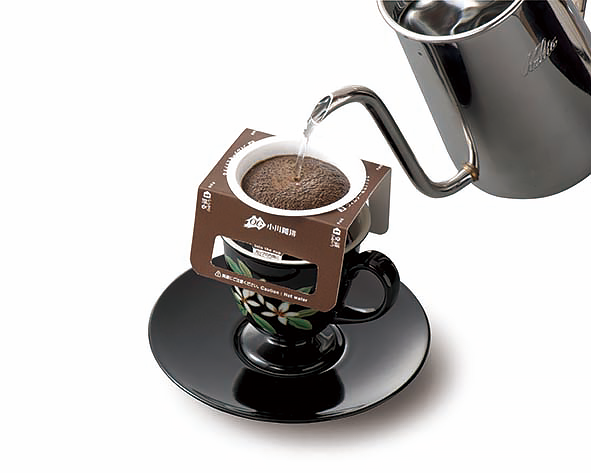
-
Q.アイス専用コーヒーをホットコーヒーとして飲むことはできますか。Can I use coffee for iced coffee to brew and drink as hot coffee?
A.アイス専用コーヒーをホットコーヒーとして飲用はできますが、ホットコーヒーと同じ分量で抽出をすると苦味を強く感じる可能性があります。分量を調整してお楽しみください。You can brew and drink coffee for iced coffee as hot coffee, but you may taste a strong bitterness if you brew the same amount as hot coffee. Please adjust the amount and enjoy.
-





